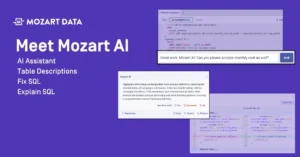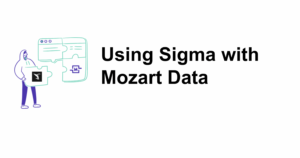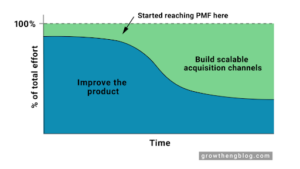All companies need a place where they can store the data their company generates — and modern companies are creating a spectacular amount — but it’s especially important if your business relies on data analysis to make decisions about the future of the business. These companies start with a data stack.
What is a Data Stack?
A data stack is the combination of tools you use to collect, clean, store, and analyze data.

Data stacks are also called the “oil” of the digital era and economy — it is a necessary and valuable part of the company’s organization and management. Data is not that useful when it’s just bits of information; the real value is revealed once it’s collected, compiled, and organized for analysis.
The Standard Data Stack Structure
There are a few standard layers in a data stack:
-
Storage for data: this is the place where the data that you have collected is placed and stored until it is needed.
-
ETL or Extract, Transform, Load solutions: this transforms and makes the data readable and analyzable before transferring it into another data place. This is transforming “raw” stored data into “polished” data to be more usable for analytics.
-
Destination database: this is the place or storage where you need to transfer the data that you need. This place is also called a data warehouse which can be provided by a company like Snowflake
-
Data analytics: this is a tool used for business intelligence to run data analysis on your transferred data. This is a way of using data in reports, visualization, and other data applications.
One helpful analogy for better understanding data stacks is cooking and the kitchen. If you think about cooking as a step-by-step process to turn raw ingredients into a meal, and the kitchen as a collection of tools that allow you to do that, that’s a bit like how a data stack helps you turn raw data into useful insights for your business.
In cooking a meal, you need to:
-
Gather the ingredients and resources and store them until needed
-
Prepare the raw ingredients by transforming them into a more useful form
-
Cook the meal on a stove or oven
-
And have some vessels to serve the food
This is applicable to data stacks as well. While data isn’t edible, obviously, it needs to be collected, cleaned, and transformed to be useful to your data analysts, which can require a great deal of work.
Why Should We Use a Data Stack? (Like Mozart)
Glad you asked. Essentially, whatever combination of tools you use for analysis are a data stack, but there are some great reasons why you might want to put more thought into it or use a dedicated tool. Here are a few:
-
It’s more cost-effective — using combined tools or tools that integrate all your data sources saves money, time, and effort because everything is in one place.
-
It helps simplify the data sharing from any data source.
-
It optimizes the efficiency and performance of understanding data for your finance, marketing, sales, and HR teams when they can access data directly for their specific purposes.
-
It can help uncover new insights and strategies for your company.
-
It improves and automates data processing and its integration.
-
It authenticates data and transforms it into reliable and usable insights for the company.
-
The overall process gives the company the ability to make necessary decision-making skills and building of strategies.
Why Do Some Companies Have Data Stacks Even if They Don’t Know How to Use Them?
Companies, especially those who do business online, already have data stacks because they’re necessary for online software and applications to store data, whether that’s purchasing history, contact information, or any number of other bits of information that your software generates about customers and visitors. While lots of companies set up these kinds of tracking and analytics for reports, visualizations, or just keeping the company’s records, not all of them take the time to make a cohesive strategy for it. In fact, in many businesses, these tools just kind of stack up over time.
A data stack is the sum total of tools you use to generate and store data whether you really pay attention to them or not. You just need to find a way to transform and access that data more intentionally if you want to use it to your advantage.
Data Stack Tools
Are data pipelines the same as data stacks?
No, but they’re an important part of it. A data pipeline is used to move data and run analytics with business and company intelligence tools. The most popular kind nowadays are known as ETL tools. To be clear, though, while an ETL tool is a data pipeline, not every data pipeline is an ETL.
A data pipeline (for our purposes we’re going to focus on ETL) is a very important part of every data stack. It is where data is moved from the raw sources and made into useful pieces of information that can be useful for data analysis. ETL stands for Extract, Transform, Load and there are three major steps in this solution:
1. Extract – In order for data to be transported or transferred into a database, it needs to be extracted or made into a single type of data. In this first phase, data is being made into a single type so that it can be easily moved from one place to another. Though extraction can be done manually by your data team, ETL tools offer a faster and more efficient way to get that done.
2. Transform – The most important part of the ETL process, the transformation step improves the integrity of the data and is the one that ensures that the data safely arrived at the destination with compatibility and purpose. This process has sub-processes in transforming data:
-
Cleaning: this is part of where data that is inconsistent or incomplete is resolved.
-
Standardization: this is where formatting is made to be applied in the present data.
-
Deduplication: repeated or redundant data are removed.
-
Verification: worthless and unusable data are discarded.
-
Sorting: data is sorted into their corresponding type.
-
Polishing: the last part is where data is improved on what is lacking or needed.
3. Load – This is the last of the ETL process where data is transferred or loaded into another place or database. It can be either loaded fully at once or at a scheduled time.
We recommend Fivetran, a great ETL tool, to make sure your data goes smoothly to its destination. It’s lightweight but still ensures that your data is up to date and accurate.
It gives you a lot of flexibility to determine when and how often your data is transferred, and its many integrations make Fivetran a ready-to-use, no-hassle pipeline for your data.
Snowflake – the reliable data warehouse for your convenience
Now that you understand the whole data stacking and processing system, you need to find the right tools to help you with your data storage and warehousing. We’re big fans of Snowflake for its reliability, combination of data lakes and data warehouses, and how easy they make it to safely store your data.
With their modern suite of data tools, Snowflake is much more advanced than other data storage tools because of the sheer number of features available under one roof. As you might have noticed, we’re big fans of keeping your data in one place — it makes sharing, transforming and analyzing it a lot easier — and Snowflake is the perfect complement to what Mozart was intended to do.
inding the best tools for your data stack can be overwhelming since there are so many available, but a simple stack of Fivetran and Snowflake, integrated through Mozart, will make it much easier to manage your data.
How Mozart Manages Your Data Stack
We mentioned above how much we appreciate Snowflake for combining a data lake and data warehouse. That kind of convenience is what we want Mozart to bring to your whole data stack.
Seamlessly integrating all your data sources, and making it easier than ever to combine the data from them, Mozart is the modern data stack your team needs (and not just your data team — Mozart makes updates so easy your business execs can access the data themselves!)
Instead of building a data stack from scratch, spread across who knows how many different platforms, Mozart makes it simple to integrate everything in one place. In fact, most of the tools you probably already use can be imported with a couple of clicks. Once that’s done, you can combine and clean the data from all of those different data sources to make it easy for your analysts to work on. With the plethora of different SaaS apps and marketing tools we’re all using to run our businesses, it doesn’t make sense to do it any other way.
Most importantly, though, we set out to make data accessible to everybody in your organization. There’s no reason in 2021 for the power of data to be locked away in one department, or for you to have to bother your data team any time you need a simple answer or a report updated. Executives, marketing, and sales should be able to start engaging with your company’s data on their own, leaving your analysts and engineers time to do the truly difficult work of finding new insights.
Stop duct taping tools together with Excel and accepting that’s all a data stack needs to be. It’s time to make things easier on yourself and join the data revolution.
Click here to sign up for your 14 day free trial and see how easy it is to build a data powerhouse yourself.


